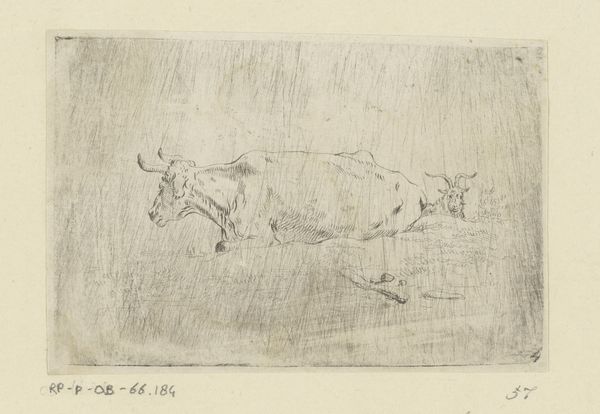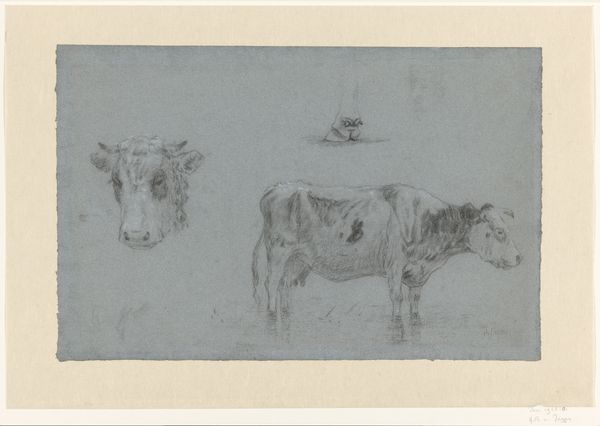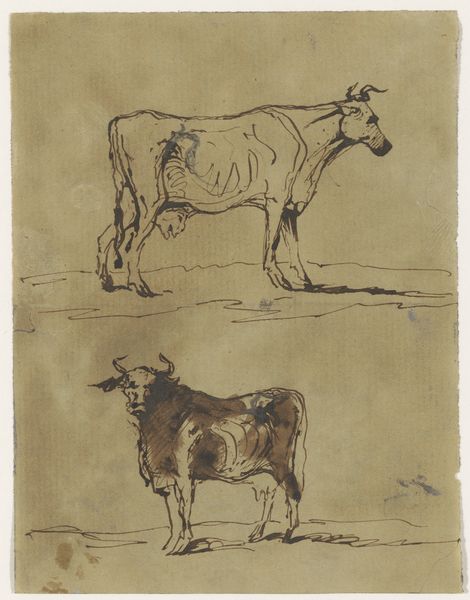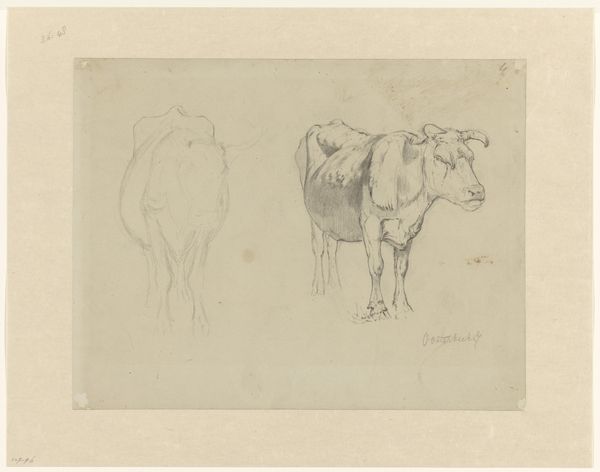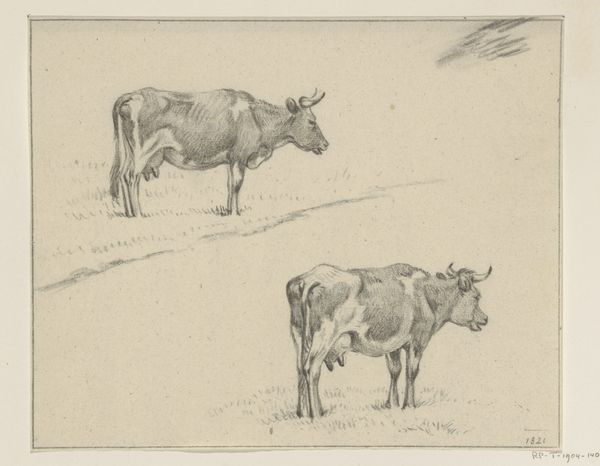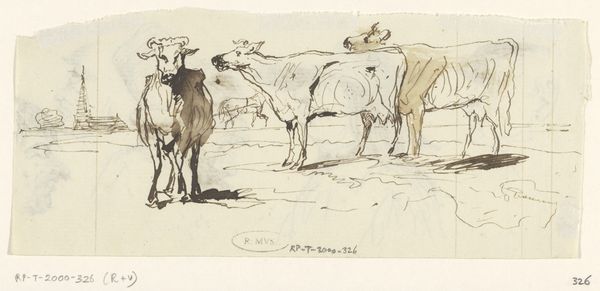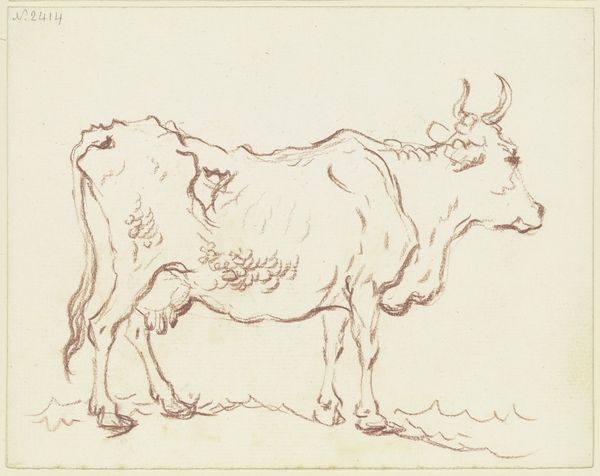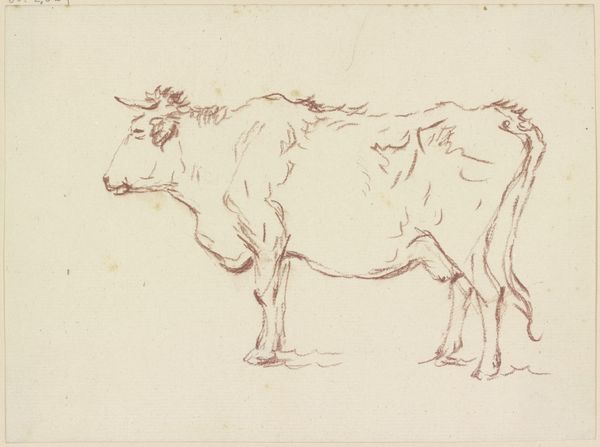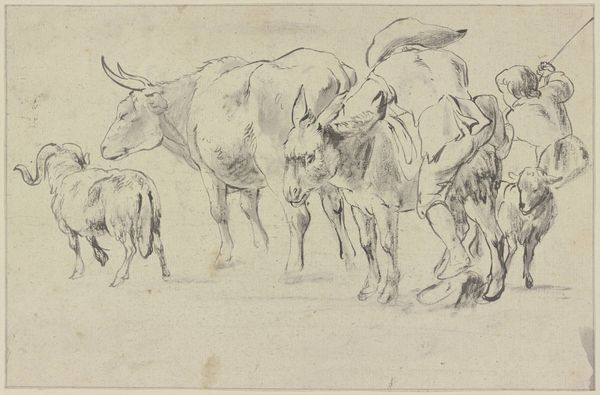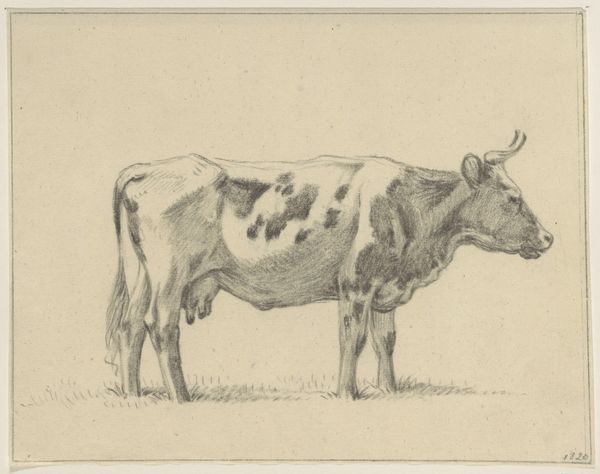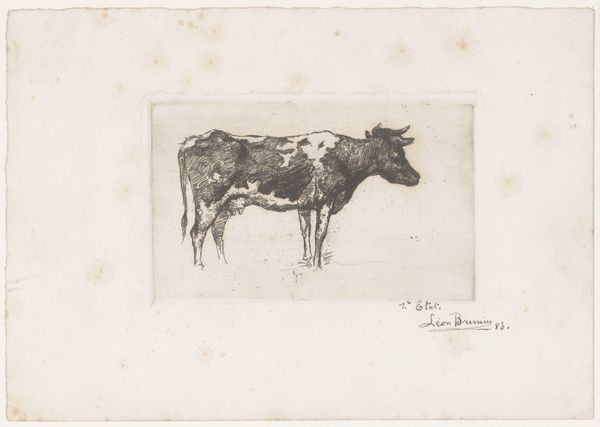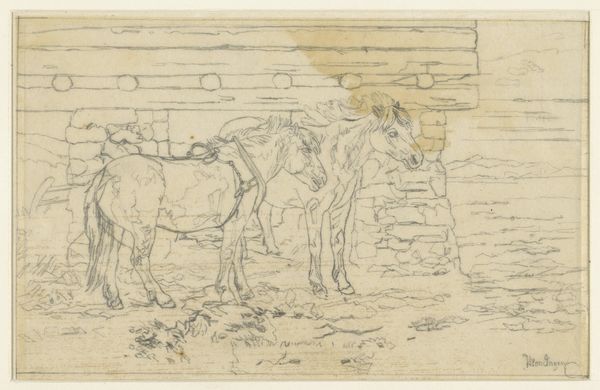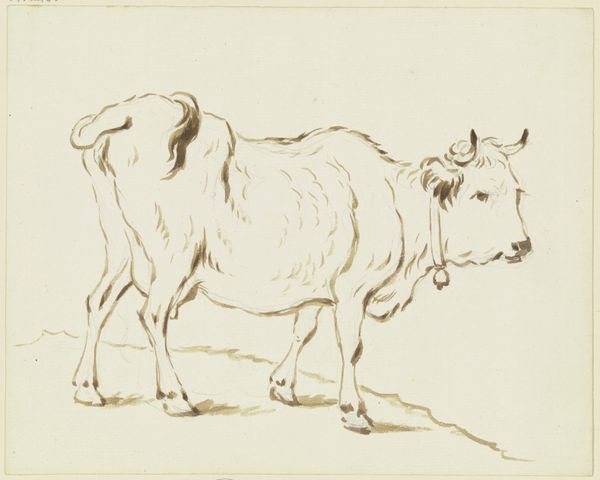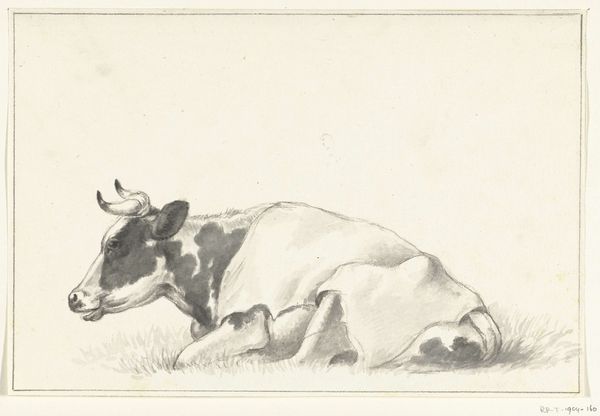
drawing, watercolor, ink
#
drawing
#
animal
#
landscape
#
watercolor
#
ink
#
watercolour illustration
#
realism
Dimensions: height 70 mm, width 120 mm
Copyright: Rijks Museum: Open Domain
Editor: This is "Koe," possibly from 1874 or 1875, by Johannes Tavenraat, currently held in the Rijksmuseum. It’s rendered in ink and watercolor, depicting a cow standing in what appears to be a field. The monochrome palette gives it a rather somber, perhaps even a bleak mood. What do you see when you look at this piece? Curator: I see a study of labor, really. Think about the social context of this image – the Netherlands in the late 19th century. Agriculture was changing, becoming more industrialized, and animals like this cow were central to the means of production. The ink and watercolor – these materials were readily available, cheap even. It speaks to a democratization of art making. Editor: Democratization? Interesting. So, the accessibility of the materials influences how we interpret the work? Curator: Precisely! Look at the quick, almost gestural quality of the strokes. This wasn't some precious oil painting taking months to complete. This was a more immediate response to the animal, its environment, perhaps even the artist's own labor. And the subject! Cows weren’t exactly high art, but essential to agricultural labor, a form of industry. How does this emphasis on production reshape traditional boundaries? Editor: I suppose it shifts our focus. Instead of just seeing a cow, we see the cow as part of a system. The art isn’t about the idyllic pastoral scene, it's reflecting the hard labor of a nation's industry and potentially challenging what is deemed art and craft. Curator: Exactly. It forces us to consider the conditions of its creation. The materials, the labor involved, the cow's role in the 19th-century Netherlands' economy – these are all material realities informing our experience of the image. How might Tavenraat's consumers have received such a rendering? Editor: I hadn't thought about it that way before. I was so caught up in the atmosphere that I completely missed the layers of social and economic commentary embedded in the materials and subject. Curator: Understanding art means questioning those boundaries! We’ve hopefully started you down the path of materialist art criticism!
Comments
No comments
Be the first to comment and join the conversation on the ultimate creative platform.
